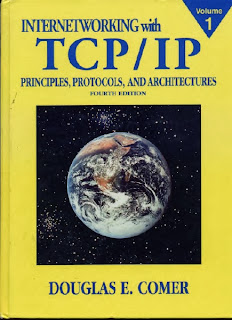Internetworking with TCP/IP, Volume III describes the
fundamental concepts of client-server computing used to build all distributed
computing systems, and presents an in-depth guide to the Posix sockets standard
utilized by Linux and other operating systems. Dr. Douglas E. Comer compares
leading server designs, and describes the key tools and techniques used to
build clients and servers, including Remote Procedure Call (RPC). The book
contains examples of running programs that illustrate each approach. Comer
introduces the client-server model and its software design implications; the
role of concurrent processing and threads; the Socket API, and differences that
impact Linux programmers. Understand the key algorithms and issues associated
with client and server software design; then review three leading approaches:
iterative, connectionless servers (UPD); and both iterative and concurrent
connection-oriented servers (TCP). The book contains extensive coverage of
threading, including a new chapter on using threads for concurrency; as well as
coverage of single-threaded and multi-threaded concurrent servers. Comer
introduces multi-protocol and multi-service services; reviews client
concurrency; tunneling at the transport and application levels; and external
data representation (XDR). He reviews RPC, distributed program generation, NFS
concepts and protocol; Telnet; streaming media transport; and finally,
techniques for avoiding deadlock and starvation in client-server systems. For
everyone who wants to master TCP/IP and understand how the Internet works.
Contents in this book:
Chapter 1 Introduction And Overview
Chapter 2 Review Of Underlying Network
Technologies
Chapter 3 Internetworking Concept And
Architectural Model
Chapter 4 Classful Internet Addresses
Chapter 5 Mapping lnternet Addresses To
Physical Addresses (ARP)
Chapter 6 Determining An Internet Address
At Startup (RARP)
Chapter 7 Internet Protocol:
Connectionless Datagram Delivery
Chapter 8 internet Protocol: Routing IP
Datagrams
Chapter 9 Internet Protocol: Error And
Control Messages (ICMP)
Chapter 10 Classless And Subnet Address
Extensions (CIDR)
Chapter 11 Protocol Layering
Chapter 12 User Datagram Protocol (UDP)
Chapter 13 Reliable Stream Transport
Service (TCP)
Chapter 14 Routing: Cores, Peers, And
Algorithms
Chapter 15 Routing: Exterior Gateway
Protocols And Autonomous 269
Systems (BGP)
Chapter 16 Routing: In An Autonomous
System (RIP, OSPF, HELLO)
Chapter 17 Internet Multicasting
Chapter 18 TCPnP Over ATM Networks
Chapter 19 Mobile lP
Chapter 20 Private Network Interconnection
(NAT, VPN)
Chapter 21 Client-Server Model Of
Interaction
Chapter 22 The Socket Interface
Chapter 23 Bootstrap And Autoconfiguration
(BOOTP, DHCP
Chapter 24 The Domain Name System (DNS)
Chapter 25 Applications: Remote Login
(TELNET, Rlogin)
Chapter 26 Applications: File Transfer And
Access (FTP, TFTP, NFS)
Chapter 27 Applications: Electronic Mail
(SMTP, POP, IMAP, MIME)
Chapter 28 Applications: World Wide Web
(HTTP)
Chapter 29 Applications: Voice And Video
Over IP (RTP)
Chapter 30 Applications: Internet
Management (SNMP)
Chapter 31 Summary Of Protocol
Dependencies
Chapter 32 Internet Security And Firewall
Design (IPsec)
Chapter 33 The Future Of TCPnP (IPv6)
